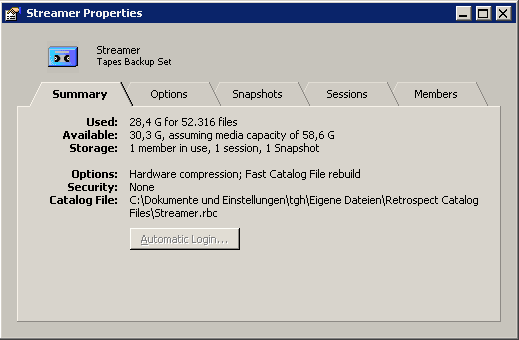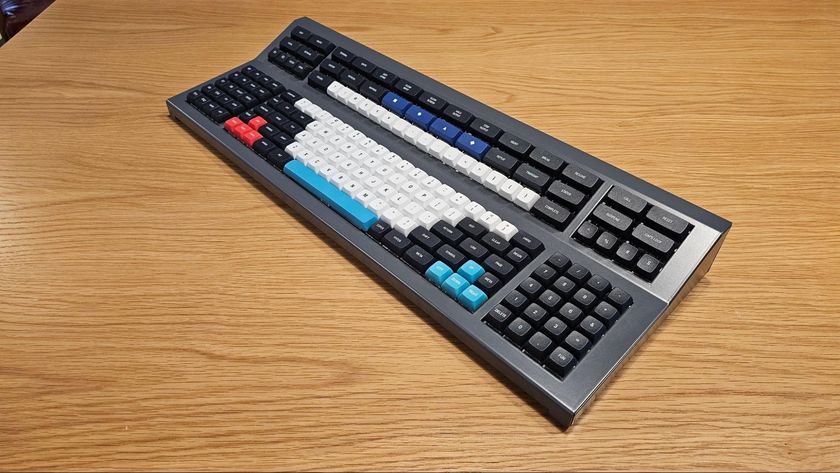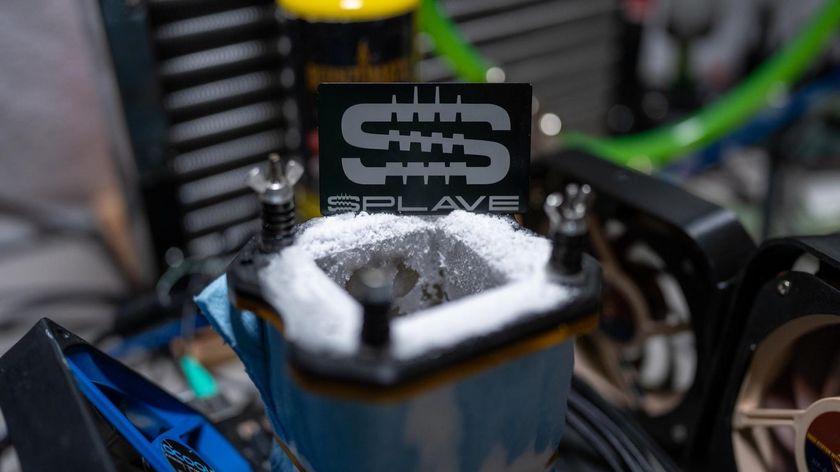The Last Resort: Streamer Technolgy Overview
Data Compression: Optimistic Specifications

The software Retrospect by Dantz also presents some optimistic specifications.
When selecting a streamer, users should take a long, hard look at storage capacity because manufacturers usually base their solutions on a compression rate of 2:1. There are also specifications of 2.5:1 on occasion. However, that needs to be put into perspective, as the resulting capacities can, of course, only be obtained with well-compressed data material: Office documents, database dumps and programming source text. The more multimedia files that are used, the less they can be compressed.
Compressed JPEGs or MPEG files can hardly be shrunk any further, in contrast to TIF images or WAV files. But when in doubt, just calculate with less physical storage capacity, in order to be on the safe side.
Mini-QIC Streamer / Floppy Streamer
The QIC format got its start as early as 1972, when the manufacturer 3M needed a solution to handle the data volumes of its telecoms customers. But at that time, people were not concerned with data backups primarily, but instead with data storage, as hard drives were still unbelievably expensive and were still seeing commercial application (e.g. IBM's Winchester Project, which was started in 1973 and became the first hard drive in 1979 with 5 MB). Due to the comparatively low costs for devices at the time, the QIC Standard gained broad acceptance.
QIC is an acronym for Quarter Inch Cartridge, which refers to the width of the magnetic tape: ¼ inch. The most widespread media in that context were the compact cassettes DC2080 and DC2120. In addition, however, there is a huge amount of media standards that host between 20 tracks and 50 tracks. In the early 1990s, the QIC streamers with an interface for the disk controller were popular, though they did not exactly dazzle people with high performance (about 35 kB/s). Any DSL connection today is faster than that.
Unfortunately, the backup sets between the different devices are often not compatible, meaning the floppy streamers were only suitable for semi-professional applications.
Stay On the Cutting Edge: Get the Tom's Hardware Newsletter
Get Tom's Hardware's best news and in-depth reviews, straight to your inbox.
Current page: Data Compression: Optimistic Specifications
Prev Page The Linear Method Or Helical Scan Next Page Travan











